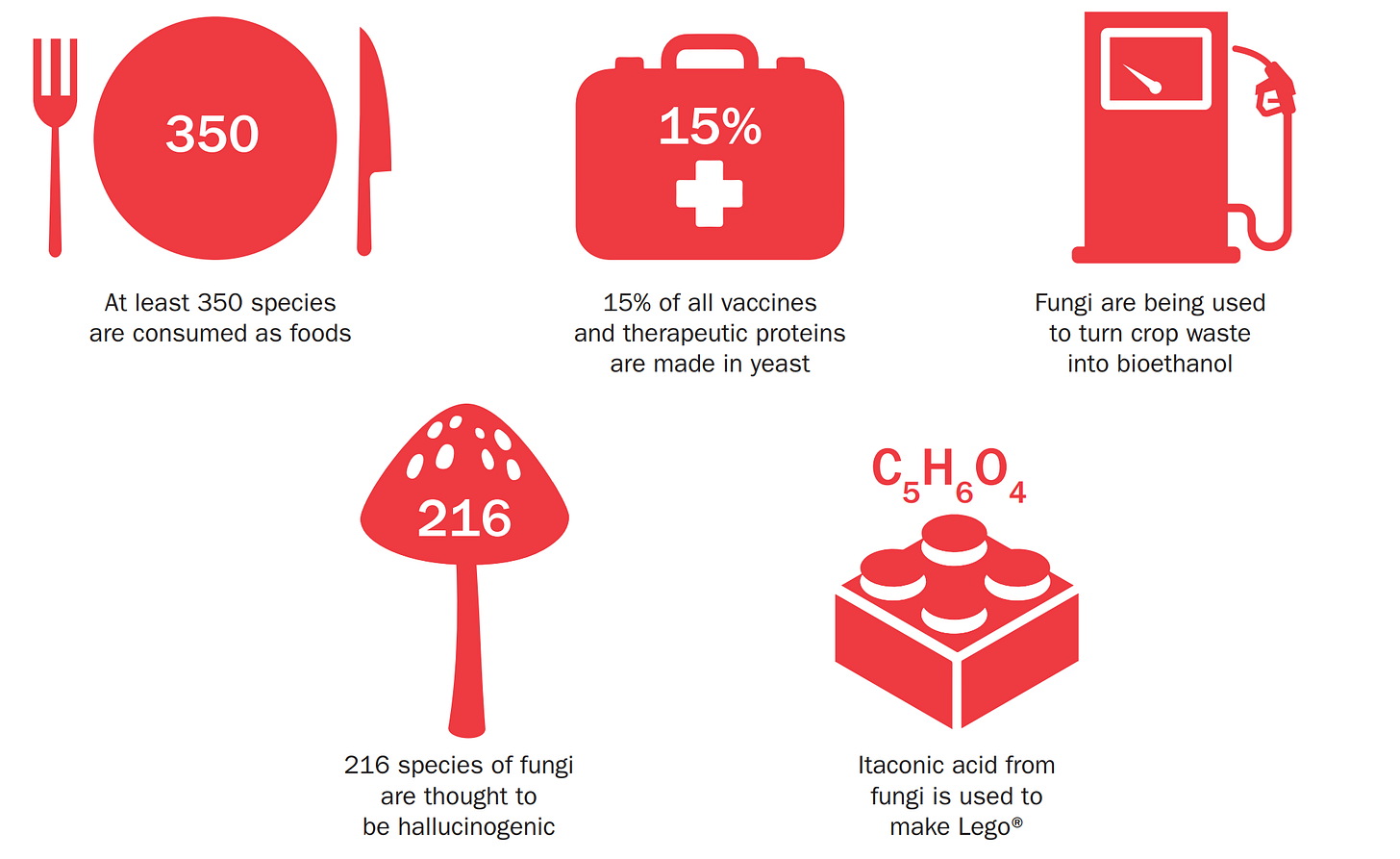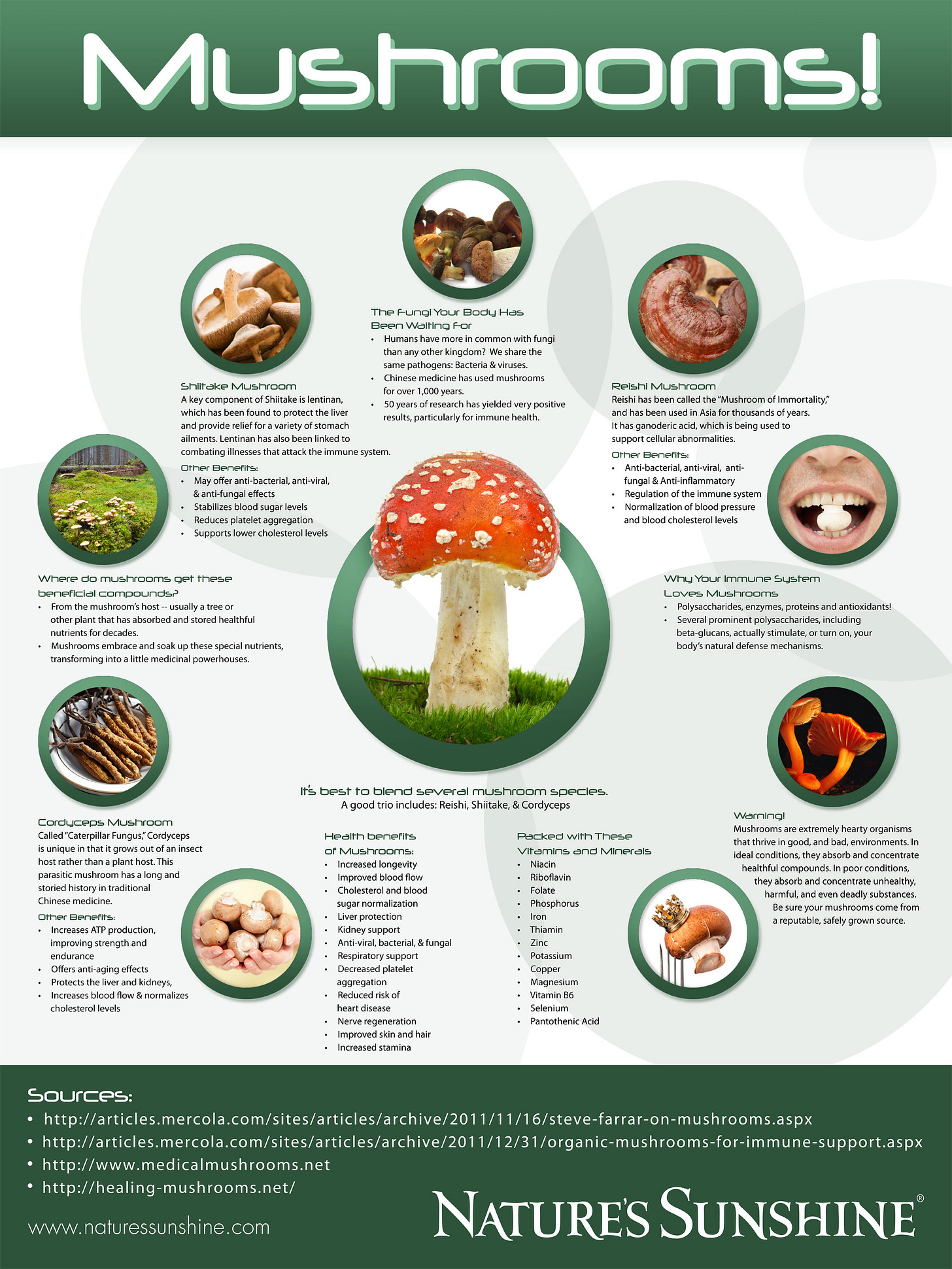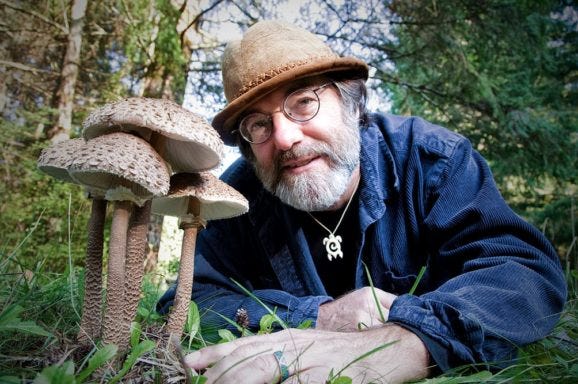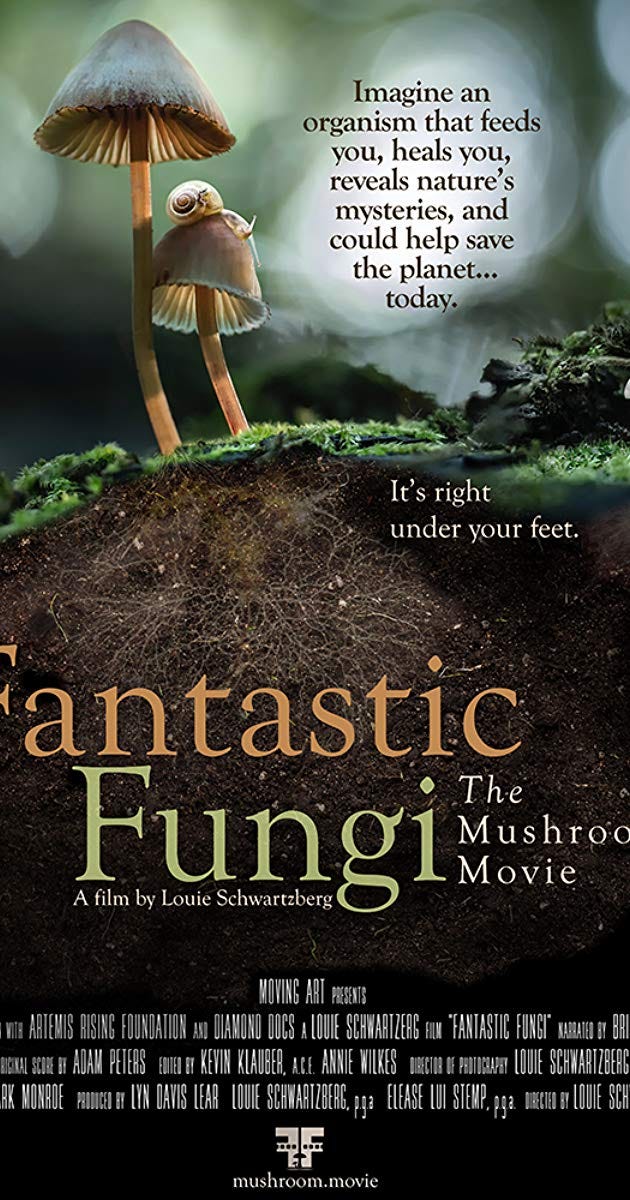~ Welcome to vol24 of #thebalance ~
Happy 2020 everyone. Been a while.
With it being the start of a new decade/year and all, I will be getting a little more experimental with this newsletter format going forward. The goal being to make this thing a little more consistent and sustainable to operate with my ever more hectic life as of late… which hopefully has the effect of making it more digestible for your readership pleasure and a little easier on me as its composer #mostlyweekly

As always, I very much appreciate your readership and support! +/- feedback always welcome.
On with the show 👏👏
🤔🤔 #GetSmart >>> This week’s dive is MUSHROOM MAGIC (and no, not just about those kinds). Covering interesting facts & benefits of fungi and how we still have SO MUCH to learn about this amazing plant…. animal….other…? #funkyfungi
🎧🎙️ #GetCastin’ >>> A great podcast from Tim Ferriss, where he interviews Paul Stamets: How Mushrooms Can Save You (and perhaps) the World #mushroomman
🎥 🎥 #GetBingin’ >>> Highlighting a doc I saw over the weekend in select theaters nationwide #fantasticfungi
⬇️ More below ⬇️
_______________________
🚨🚨🚨 EDITOR’S NOTE: There have been reports of this newsletter hittin’ email junk folders. This is no bueno.
ACTION >>> Please HELP ME combat this by adding #thebalance to your email contacts, dragging the email into your inbox (and out of the bulk mail folder), and/or even respond directly to this. THIS WILL HELP ME OUT LOT. THANK YOU :) #badrobots
***Just as a refresher, the core thesis of this newsletter is to pique your curiosity by aggregating interesting topics in a thematic, bite sized, and relevant manner (w/ original posts occasionally) - ranging from blog posts, books, music, events, podcasts, and ideas on how to stay active, travel or otherwise... And please keep sending feedback my way… the goal is to make this thing worth it for you!***
⏩ ⏩ If you like what you see, please share by forwarding (see ‘sign up now’ button) this letter onto your people and/or Tweet out some support!
_______________________
#GetSmart
🤔🤔 This week’s dive is all about MUSHROOMS and their magic. Get Smarter below.
>>>> The Mighty Mushroom
All mushrooms are fungi, but not all fungi are mushrooms.
For those fungi that produce them, the mushroom plays a similar role to a flower or a fruit in plants. Some part of each mature mushroom produces microscopic spores that are similar to pollen or seeds, sometimes numbering in the trillions.

The rest of the fungal organism typically lives in the soil, wood, or some other material and is composed of thread-like strands known as mycelium. The expanding growth of the mycelium often results in circles of mushrooms or “fairy rings.”
An individual mycelium can grow quite large, with at least one well-documented case covering more than 1,500 acres in Oregon, which is 1,665 football fields and is known to strangle trees from underground by cutting of their nutrients and water supply.
Humongous Fungus!!! 😱😱
>>>> What is Mycelium?
From my Wood Wide Web post last year, you might remember, but as a refresher…
Mycelium is the vegetative part of a fungus or fungus-like bacterial colony, consisting of a mass of branching, thread-like hyphae. The main part of the fungus is the mycelia, which lives inside the substrate (wood, straw, grain, etc). The mushrooms that we eat are actually just a small visible part of the organism. Through the mycelium, a fungus absorbs nutrients from its environment.

Fungi and bacteria are now widely acknowledged as playing a central role in the health of all organisms, including plants and humans. In plants, beneficial symbiotic fungi live at least partly within the plant and fall broadly within two groups – endophytic fungi (endophyte meaning ‘within plant’) and mycorrhizal fungi (mycorrhiza meaning ‘fungus root’). These symbiotic fungi, found growing within or between cells in plant shoots and/or roots, provide a variety of benefits to their host plants.
In short, it is estimated that ~90% of living plant species have mycorrhizal fungi associated with their roots. Everything is connected, literally.
>>>> Fungi: Plant, Animal, or Other?
Despite early recognition of the importance of fungi for human well-being, and archaeological evidence for human uses of fungi in food, drinks and medicines going back at least 6,000 years, historically they have remained in the shadows when compared with research on plants and animals.
It used to be, for instance, that higher organisms were divided into two kingdoms, plants and animals.
The revised crown of the tree of life now includes five kingdoms, of which fungi is one. It wasn’t until detailed work on fungal features including the cell wall, methods for digesting and storing food, and DNA, that it became apparent that they are in fact a kingdom in their own right, closer to animals than plants.
Fungi are immensely diverse
144,000 species named and classified so far at a current rate of around 2,000 per year; this is comparable to the rate of species discovery of new plants
It is estimated that the vast majority (over 93%) of fungal species are currently unknown to science
The latest best estimate suggests that the total number of fungal species on Earth is somewhere between 2.2 and 3.8 million, a number that exceeds the estimated number of plants by more than 6x!!!
>>> Mushrooms as Food AND Medicine
The global market for edible mushrooms is estimated to be worth US$42 billion per year. At least 350 species of fungi are collected and eaten as food, although the exact number is likely to be higher as this information is not available for many countries. These edible species come from just 18 orders of fungi, which is a small fraction of total fungal diversity.

>>> Medicinal Health benefits


>>> Types of Mushrooms

>>> Magic Mushrooms (yes, those kind)
Psilocybin, a classic hallucinogen and the active ingredient in “magic mushrooms”, is a chemical produced by more than 100 species of mushrooms worldwide. The key to understanding its mechanism may lie in parts of the brain it affects.
Study: In brain imaging studies in 15 healthy volunteers, psilocybin decreased connectivity in the brain’s default mode network. This system is activated when a person is thinking about oneself, the past, and the future. Meditation also reduces activity in this system.
What’s common to both meditation and psychedelic experience is the focus on immediate experience as a dissolution of the sense of self or “ego.”
In the brain imaging study, psilocybin led to so-called “unrestrained cognition.” This resembles the sudden opening of a “valve” that otherwise keeps normal consciousness in check to a more fluid, hyperconnected state.
So far, the majority of the evidence that psilocybin offers benefits -- increased creativity, less anxiety, decreased need for caffeine and reduced depression -- has been anecdotal. But researchers are starting to get curious and have shown psilocybin to have potential to treat a range of psychiatric and behavioral disorders, although it’s yet to receive FDA approval for anything (yet).
From the NIH, it appears psilocybin may have some efficacy as an alternative agent to manage mental health conditions such as:
tobacco and other addictive substance cessation
anxiety disorders
suicidality and depressed mood
obsessive compulsive disorders

#GetCastin’
🎧🎙️ For those interested in learning more about the medicinal qualities of mushrooms, I highly recommend checking out this interview with Paul Stamets and Tim Ferriss.

“Paul Stamets (@PaulStamets) is an intellectual and industry leader in the habitat, medicinal use, and production of fungi. Part of his mission is to deepen our understanding and respect for the organisms that literally exist under every footstep taken on this path of life…. The implications, applications, and medicinal uses of what we discuss in this interview are truly mind-boggling, and we get into some of my favorite subjects, including psychedelics and other aspects of bending reality.”
Bonus: Paul Stamets’ Ted Talk
#GetBingin’
🎥 🎥 Fantastic Fungi, directed by Louie Schwartzberg, is a consciousness-shifting film that takes us on an immersive journey through time and scale into the magical earth beneath our feet, an underground network that can heal and save our planet.
Through the eyes of renowned scientists and mycologists like Paul Stamets, best-selling authors Michael Pollan, Eugenia Bone, Andrew Weil and others, we become aware of the beauty, intelligence and solutions the fungi kingdom offer us in response to some of our most pressing medical, therapeutic, and environmental challenges.

Have a great week all!!
Curiously,
Brian
***Including a snippet from the Exponential View newsletter (a must read for me each week), which posts the below carbon tracker. Latest update below:
😢😢 Each week, we’re going to remind you of the CO2 levels in the atmosphere and the number of days until reaching the 450ppm threshold.
The latest measurement (as of January 11): 413.20ppm; January, 2017: 406.13ppm; 25 years ago: 360ppm; 250 years ago, est: 250ppm. Share this reminder with your community by forwarding this email or tweeting this.Focus on the delta over the past 12 months. The delta itself continues to increase. We are ~3,785 days from the dreaded 450ppm threshold.”

A little bit about me:
My friends call me Block. Minnesota born & raised, I now live and work in New York City.
I am endlessly curious and eternally optimistic. I have a passion for new ideas, obsessed with all things technology, and am always seeking to broaden my perspective while striving for balance.
I am an open finance enthusiast, futurist, investor, entrepreneur, builder, advisor, life long learner, hockey player, traveler, podcast addict, hip-hop head, e-newsletter junkie, event planner, and comedic-short producer. Follow me on Twitter here and Instagram here.
“Find a question that makes the world interesting.” - Paul Graham
Please make sure to add #thebalance newsletter to your ‘my contacts’ list so you don’t miss out on the mostly weekly emails. There have been reports of gmail junkin’ this beautiful newsletter.
If you enjoy #thebalance newsletter, please show some love on the interwebs. Tweet some support!


